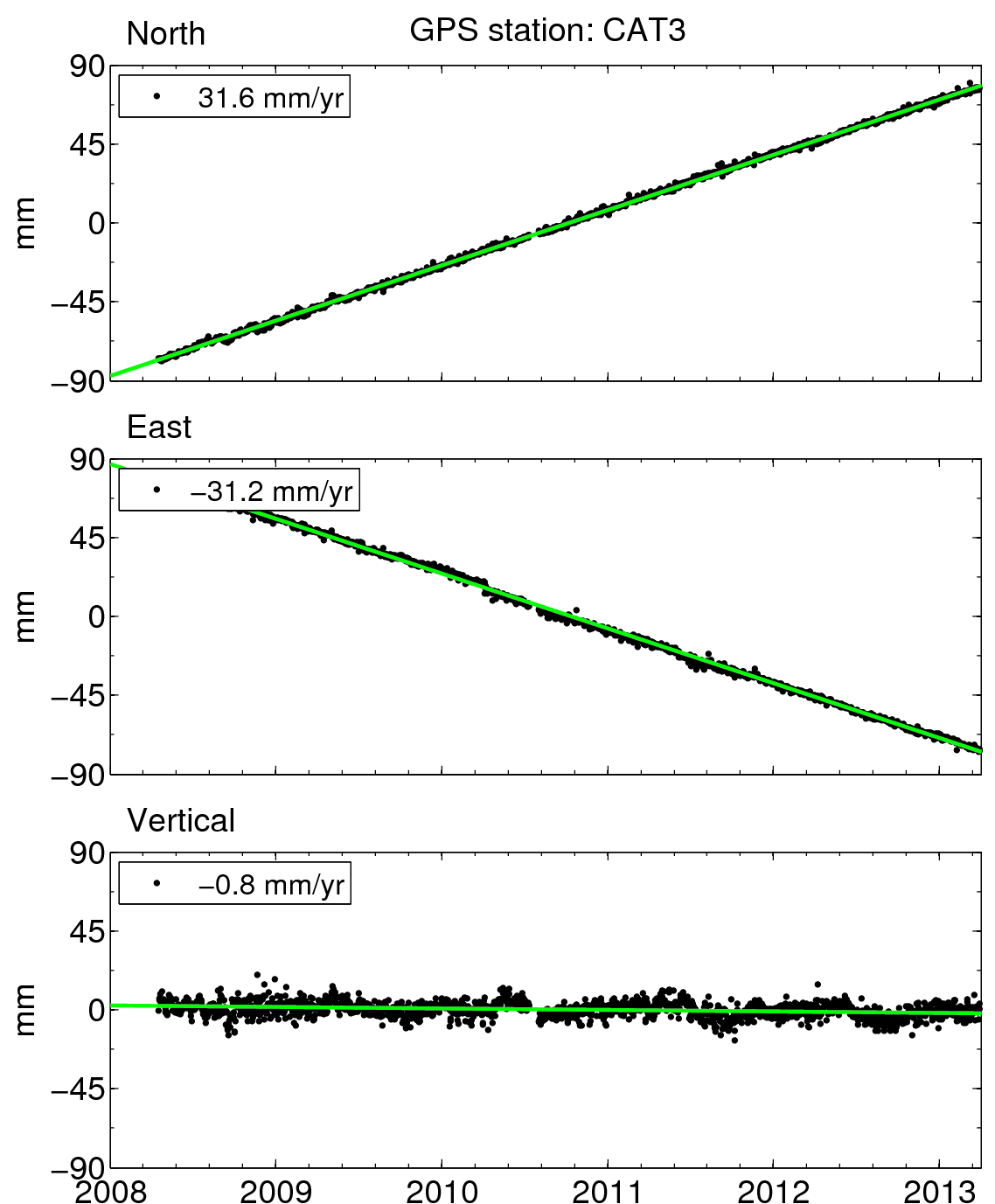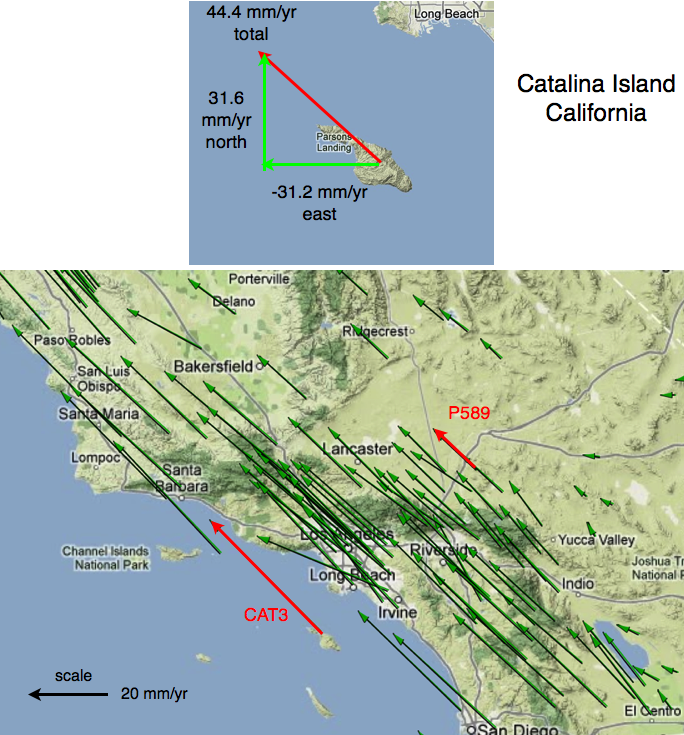Scientists generally use two tools to look at GPS data when studying tectonics: time series and velocity vectors. We'll use station CAT3, on Catalina Island off the coast of California, as an example.
A time series is a graph that shows how positions change over time (Figure 1).


A velocity vector is an arrow that shows direction and speed of motion of a GPS site. The velocity vector for each site shown in Figure 2 is calculated from data like those shown in Figure 1.
Last modified: 2019-12-26 16:24:59 America/Denver


Please send comments and corrections to education unavco.org.
unavco.org.
Copyright © 2012 - 2026 UNAVCO and the GPS Reflections Research Group.
All Rights Reserved.